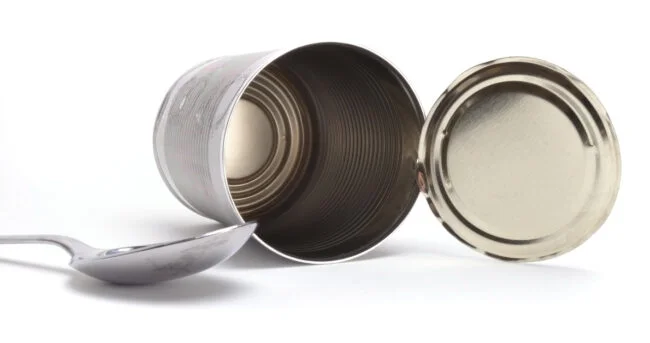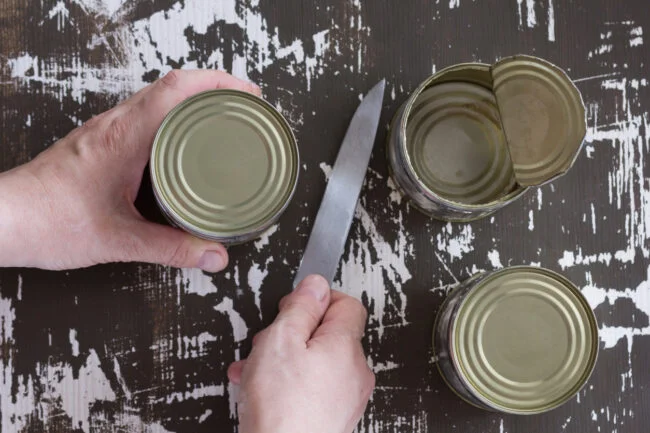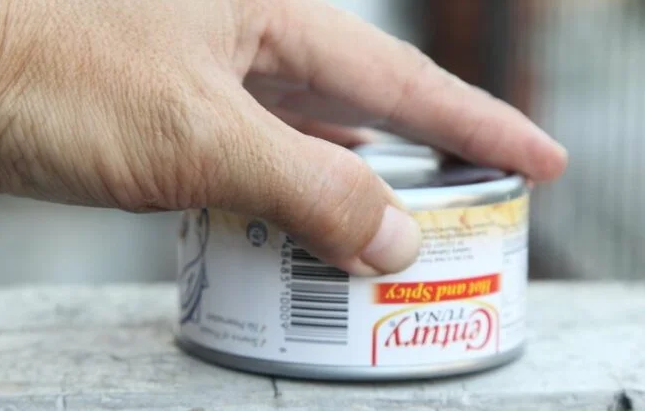In the realm of culinary mishaps, a misplaced or malfunctioning can opener need not spell disaster when it comes to accessing canned delicacies, be it soups, tuna, or pet food. Canned goods have long held their position as a kitchen essential, and typically, we rely on manual or electric can openers to unveil their contents. Yet, there might be a day when this essential tool is elusive, lost, or rendered inoperative.
Fear not, for much like the resourceful ways to unseal a stubborn jar, there exist alternative methods to open a can when a can opener is nowhere in sight. Let’s explore how to conquer the challenge of opening a can without the conventional tool.
Cracking the Code with a Spoon

A spoon, surprisingly, can come to your rescue as an effective can opener replacement. It’s worth noting that can lids, even when opened using a standard can opener, can be sharp, and extra caution should be exercised to avoid any accidental cuts while using this method. Here’s how to go about it:
Step 1: Secure a metal spoon and set the can on a steady, flat surface to prevent any unwanted sliding or shifting during the process. A plastic spoon won’t cut it; you’ll need a robust metal one.
Step 2: Hold the spoon with your fingers gripping the bowl, not the handle. Position your index finger just below the handle and let your pinky finger rest inside the curve of the spoon for a more secure grip. Align the spoon’s bowl with the inner edge of the can’s lip, much like where a can opener would attach. Ensure that the open part of the bowl is facing inward, toward the center of the lid.
Step 3: Apply firm pressure and move the spoon back and forth along a small section of the inner lip of the can. Repetition of this motion will gradually wear down the metal until a hole is formed after a few minutes.
Step 4: Once a hole emerges, insert the spoon’s tip into it. With the spoon tip facing upwards and pressing against the inner edge of the lid, move it forcefully around the lid’s perimeter. Continue until enough metal breaks off, enabling you to cautiously open the lid and access the can’s contents. Be mindful to avoid cuts from the sharp edges of the lid.
Unsealing Cans with a Knife

A knife, particularly one without a bolster, such as a santoku knife, can be a useful substitute for a can opener. Whether it’s a chef’s knife, a pocket knife, or a cleaver, a more substantial and weighty knife is preferable as it ensures stability and facilitates puncturing the can’s lid. Remember to prioritize safety when using a knife:
Step 1: Place the can on a stable surface and grasp the knife right where the blade meets the handle. Position your thumb along the flat side of the blade, keeping your other fingers clear of the sharp edge.
Step 2: Position the knife’s heel against the raised lip on the lid’s rim. The heel, which is the widest part of the blade away from the tip, should be placed snugly against the lid’s raised lip.
Step 3: Apply force to the knife, pushing down firmly to puncture the lid. For added pressure, you can lean over the can and use your free hand to support the hand holding the knife.
Step 4: Repeatedly puncture holes around the entire circumference of the lid using the same method.
Step 5: Carefully use the knife to lift and pry open the lid. Protect your fingers and hands, and always ensure the sharp edge of the blade is facing away from your body to minimize the risk of injury.
Improvising with a Rock or Concrete

Occasionally, cans with pull tops may become stubborn, rendering the pull ring useless. When you’re far from home without a knife or spoon, a rock or a piece of concrete can serve as an alternative can opener:
Step 1: Find a flat rock or concrete surface with a rough texture. Invert the can and place it on the rock.
Step 2: Create friction by repeatedly sliding the can back and forth over the rock. The friction will gradually thin the lid, making it easier to remove.
Step 3: Once moisture appears between the can and the rock due to the friction, the lid should be sufficiently thin to remove. Pry open the lid using a pocket knife or a similar tool, ensuring it’s clean to avoid contaminating the contents.
In Conclusion
Opening a can without a can opener may be more challenging than using the conventional tool, but it’s entirely feasible with a bit of patience and effort. Whether you’re far from home or your can opener has vanished, the methods mentioned above—using a spoon, knife, or even a rock or concrete—can save the day. Remember always to exercise caution due to the potential sharpness of the can lid.
images sources : istockphoto – wikihow










